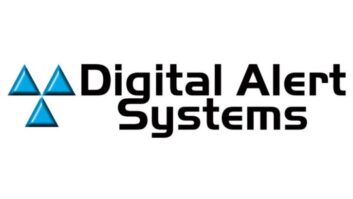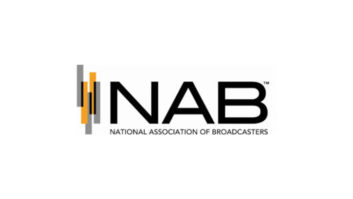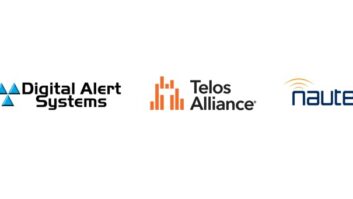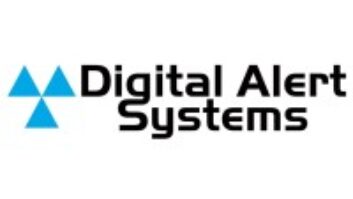Digital Alert Systems has filed comments in the FCC’s “Delete, Delete, Delete” initiative, where it proposes scaling back Electronic Test Reporting System filings and the withdrawal of multilingual Emergency Alert System requirements.
DAS is a manufacturer of EAS and CAP (Common Alert Protocol) hardware.
The comments, submitted by Ed Czarnecki, DAS’s vice president of global and government affairs, also support the NAB’s efforts to facilitate a nationwide transition to the ATSC 3.0 digital TV standard.
DAS reiterated its opposition, however, to NAB’s proposal to fast-track software-based EAS, as Radio World previously reported.
Streamline ETRS filings
DAS urged the commission to reconsider the ETRS filing process, used to coordinate national EAS tests. While acknowledging the importance of the tests, DAS stated that the current filing process places a significant burden on participants.
[Related: “State Broadcasters Paint Picture of Successful EAS Test”]
The company explained that participants are currently required to complete three separate filings for each national EAS test. Form 1 alone requires the input of 55 data fields, information DAS suggested could largely be cross-referenced with existing commission data.
Regarding Form 2, the day-of-test report confirming receipt and forwarding of the national test, DAS emphasized the time commitment involved. “EAS participants expend considerable resources — hundreds, if not thousands, of person-hours — across tens of thousands of devices to gather this information,” the company said. DAS argued that the complexity involved for the multiple filings are disproportionate to the minimal additional value they provide. The company said small and rural operators are most affected, which may lack dedicated compliance or technical staff.
To streamline the process, DAS recommended that the commission consolidate the filings into a single form focused on qualitative information that could be more readily reported by EAS devices or related systems. The company also proposed allowing EAS device management tools to self-report using a simple email mechanism or a direct transport channel to a designated FCC portal.
Multilingual requirements for EAS are “premature”
In other areas, DAS voiced its support for the NAB proposal to withdraw multilingual EAS requirements.
The FCC initially proposed this concept in February 2024 to improve emergency alert accessibility for individuals whose primary language is not English. The plan would have required broadcasters to transmit alerts in the primary language of their station’s content using pre-loaded scripts translated by the commission.
DAS aligned with the NAB’s assessment, stating that “such a proposal warrants greater technical and operational study and is premature at this time.” They elaborated on their concerns, noting that while the FCC’s goal of improving EAS accessibility for non-English speakers is commendable, the proposed mechanism — requiring broadcasters and other EAS participants to transmit alerts in their station’s primary language using FCC-pre-translated, pre-loaded scripts for the top 13 languages nationwide — raises significant concerns.
Software-based EAS goes against “deregulatory” spirit
DAS reiterated its previously voiced concerns regarding the NAB’s petition to fast-track software-based EAS solutions.
[Read more coverage of the comments about this issue, pro and con.]
The company argued that the NAB proposal contradicts the deregulatory spirit of the “Delete, Delete, Delete” initiative, asserting that software-based EAS would necessitate the creation of additional regulatory infrastructure. DAS concluded that “the NAB proposal in its petition is premature, underdeveloped, and raises profound regulatory, cybersecurity, operational and public safety concerns.”
Support for NextGen TV
DAS supported the NAB’s proposal to eliminate the ATSC 1.0 simulcast requirement for television stations.
The company urged the commission to immediately eliminate the “substantially similar” rule, which is currently set to sunset in July 2027. This rule mandates that ATSC 3.0 signals must carry content essentially identical to the ATSC 1.0 simulcast. DAS contended that this rule artificially limits innovation in ATSC 3.0 by preventing broadcasters from offering enhanced content.
The company further recommended that the FCC delete the rule requiring simulcasting of ATSC 1.0 and ATSC 3.0 entirely by February 2028. DAS argued that ending the simulcasting requirement by this time would allow stations to repurpose bandwidth currently used for legacy ATSC 1.0 streams for NextGen TV services.
DAS also noted that the emergency information capabilities enabled by ATSC 3.0 surpass the basic text-based alerts of ATSC 1.0, including features like alert targeting by geographic zone. They concluded that ATSC 3.0 represents a significant advancement in public alerting architecture, and requiring its coexistence with ATSC 1.0 restricts broadcasters’ ability to deliver these enhancements “with the timeliness and clarity required for emergency communications.”
You can read the entire 17-page “Delete, Delete, Delete” filing from DAS here.






